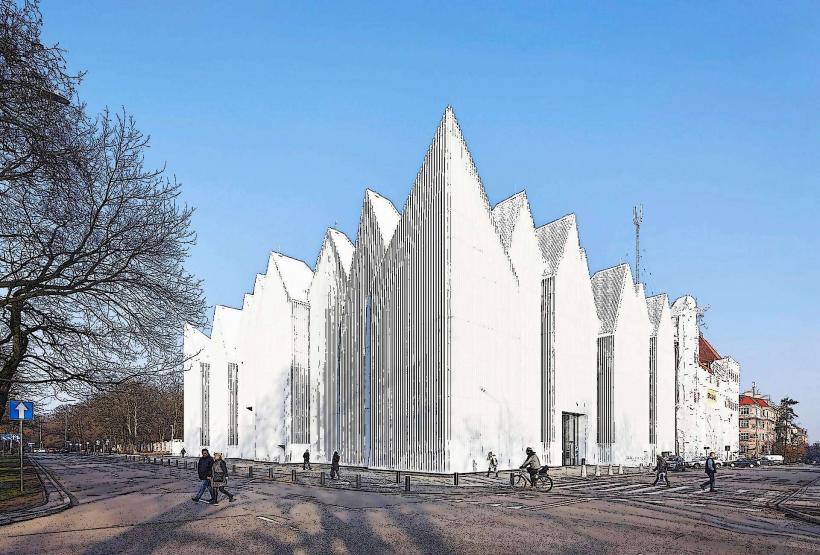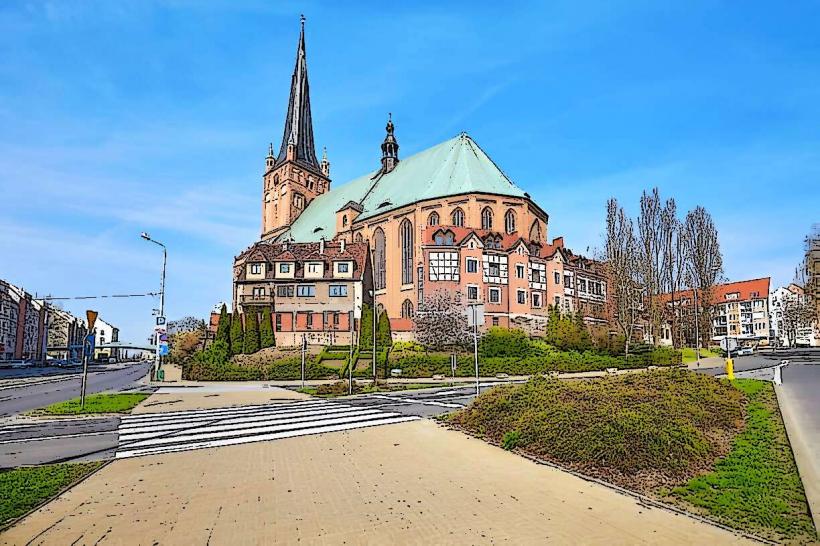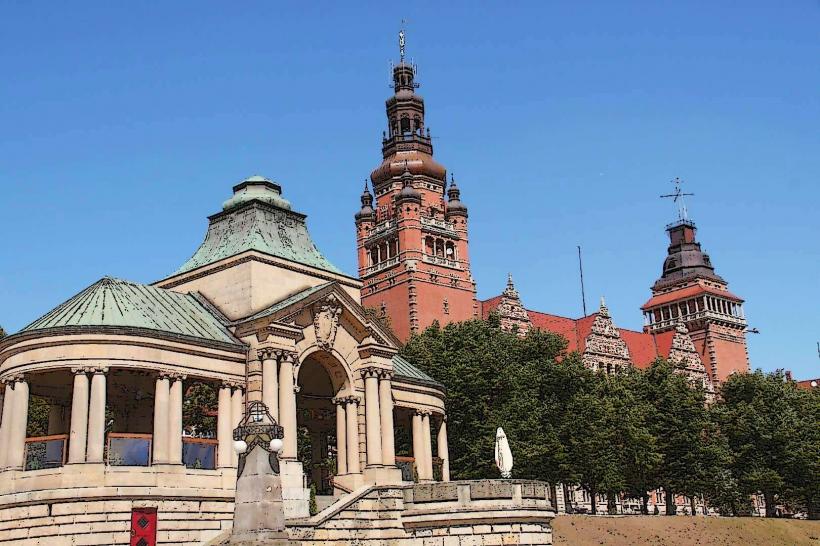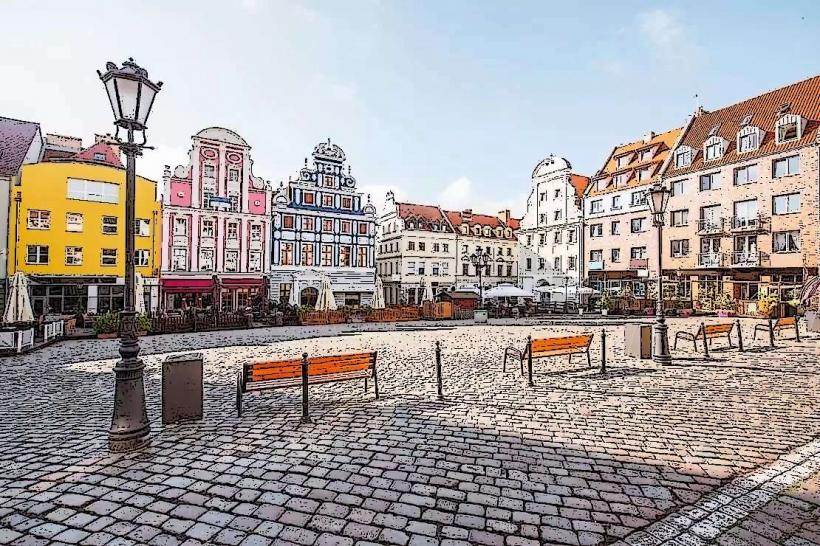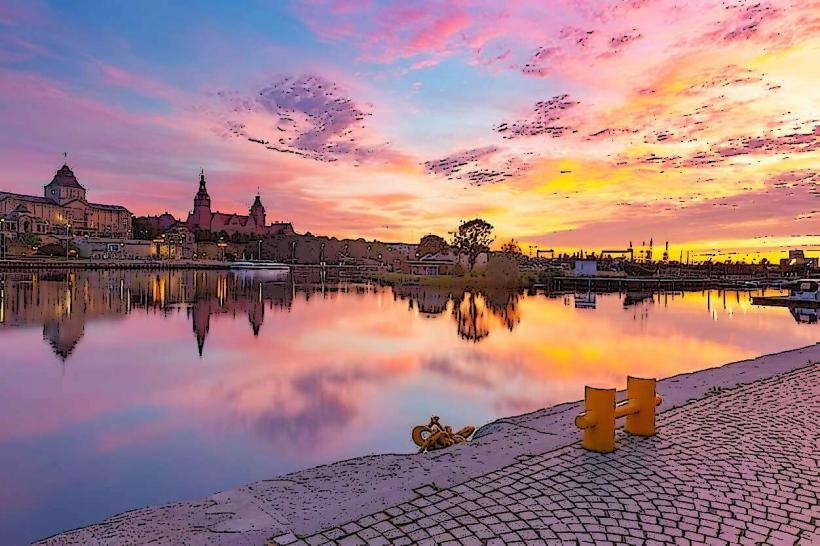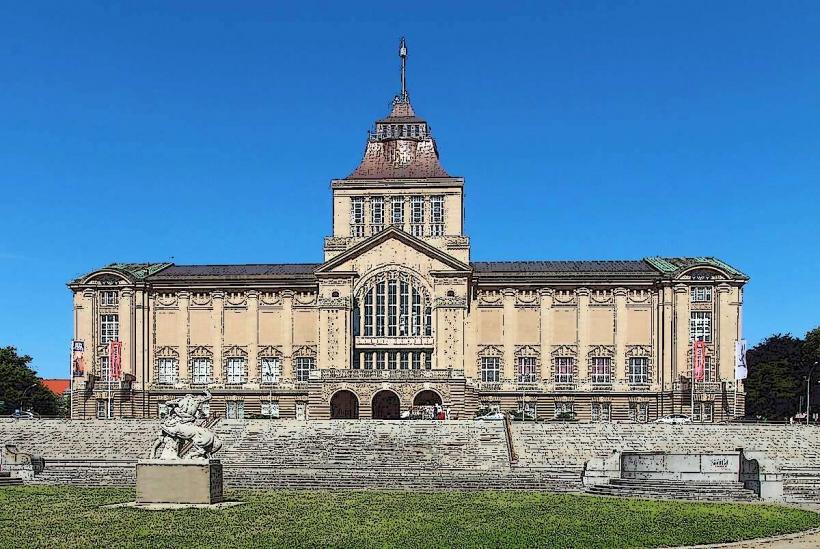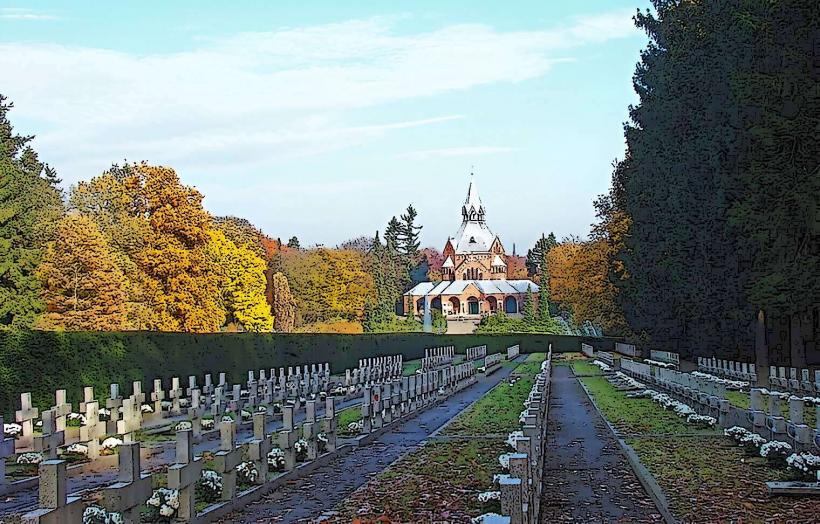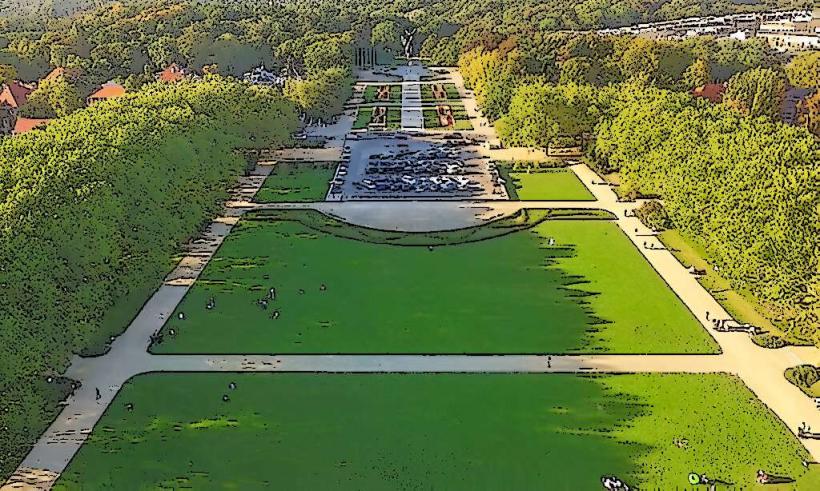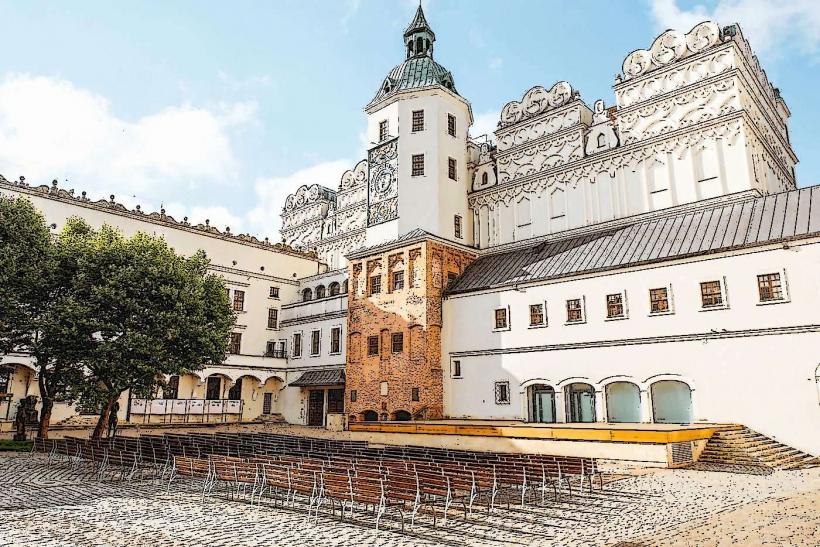Information
City: SzczecinCountry: Poland
Continent: Europe
Szczecin is a major city located in the northwest of Poland, near the Baltic Sea. It is the capital of the West Pomeranian Voivodeship and one of the most important ports in Poland. Historically, Szczecin has been shaped by its maritime significance, rich cultural heritage, and its complex history, having been part of both Poland and Germany at various points. Today, Szczecin is a growing center of industry, culture, and education.
History
Szczecin's history dates back to the Middle Ages, with evidence of Slavic settlement in the area as early as the 8th century. The city became a major center of trade and culture during the medieval period, and it was an important member of the Hanseatic League, a powerful medieval trade network.
From the late 17th century, Szczecin was part of the Kingdom of Prussia and later Germany, under the name Stettin. The city played a key role in the expansion of the Prussian and German empires, particularly as a military and industrial hub. It remained under German control until the end of World War II, when it was transferred to Poland under the post-war borders agreed upon by the Allies.
The transition from German to Polish control led to significant demographic changes, as the German population was replaced by Polish settlers. Despite its turbulent history, Szczecin has retained much of its historic character while adapting to the modern era.
Geography and Layout
Szczecin is located on the Oder River, near the Baltic Sea, and it is one of the largest cities in Poland in terms of area. The city's layout is shaped by the river, with a mix of industrial zones, residential areas, and green spaces. The central part of Szczecin is characterized by wide boulevards and squares, with several important landmarks such as the Old Town, the Pomeranian Dukes' Castle, and the beautiful Waly Chrobrego Promenade.
The city is also close to the Szczecin Lagoon, a large body of water that provides access to the Baltic Sea and is a key part of the city’s port infrastructure. Szczecin is known for its green spaces and parks, with over 100 parks and gardens scattered throughout the city, making it one of the greener cities in Poland.
Economy
Szczecin has historically been a center of trade, industry, and maritime activity. Its location on the Oder River and proximity to the Baltic Sea have made it an important port city. Today, Szczecin remains one of Poland's major ports and a key hub for maritime trade. The Port of Szczecin is a significant economic asset, handling a variety of cargo, including coal, timber, and chemicals.
The city also has a diversified economy, with industries such as shipbuilding, manufacturing, petrochemicals, and logistics playing important roles. Szczecin is home to several large industrial enterprises, including shipyards and chemical plants, which have contributed to its status as an industrial hub in Poland. The city’s economy has diversified in recent years, with growing sectors in information technology, biotechnology, and renewable energy.
Szczecin is also a center for commerce and services, with many international companies establishing offices in the city. The city’s location near the border with Germany provides access to both Polish and German markets, making it an attractive place for cross-border trade and investment.
Education and Research
Szczecin is an important center for higher education in western Poland, with several universities and research institutions. The University of Szczecin, founded in 1984, offers a wide range of programs in the arts, social sciences, and natural sciences. The West Pomeranian University of Technology is a leading institution for engineering, technology, and the applied sciences in the region.
In addition to universities, Szczecin is home to various research centers, particularly in the fields of marine biology, shipbuilding, and environmental studies. The city’s location on the Baltic Sea and the Oder River makes it an ideal place for research related to maritime industries and the environment.
Culture
Szczecin has a rich cultural scene, influenced by both Polish and German traditions. The city is known for its theaters, music festivals, and museums. One of the most notable cultural institutions is the Szczecin Philharmonic, housed in a modern building designed to resemble a ship, reflecting the city’s maritime history. The philharmonic hosts concerts by world-class musicians and orchestras.
The Pomeranian Dukes' Castle, a medieval fortress that once served as the residence of the dukes of the region, is now a major cultural center, offering concerts, art exhibitions, and historical tours. Szczecin is also home to the National Museum, which has extensive collections on the history of the region, as well as contemporary art and cultural heritage.
Szczecin hosts several festivals throughout the year, including the Szczecin Music Fest, The Offside Film Festival, and the Szczecin Jazz Festival, which attract visitors and artists from all over Europe. The city is also known for its vibrant nightlife, with many bars, clubs, and cultural venues catering to a youthful audience.
Public Transport and Infrastructure
Szczecin has a well-developed public transport system that includes buses and trams. The city is investing in modernizing its public transport infrastructure, with new tram lines and bus routes to improve mobility. Szczecin is also a key transport hub for both Poland and Europe, with connections to other Polish cities, as well as to neighboring Germany.
The Szczecin-Goleniów Airport (also known as Solidarity Szczecin-Goleniów Airport) serves the city, with flights to major European destinations. Szczecin is well connected by rail, with frequent train services to cities like Warsaw, Gdańsk, and Wrocław, as well as to Germany. The city’s location along major highways makes it easy to access from other parts of Poland and Europe by car.
Green Spaces
Szczecin is one of the greenest cities in Poland, with numerous parks and natural areas offering residents and visitors ample space for outdoor activities. Some of the most notable green areas include:
- Kasprowicz Park: A large, picturesque park with lakes, walking trails, and picnic areas, located in the heart of the city.
- Zdroje Park: A park with a historical sanatorium, designed for relaxation and wellness.
- Waly Chrobrego Promenade: A beautiful promenade along the Oder River, offering stunning views of the waterfront and the city.
- Szczecin Lagoon: An area of natural beauty, popular for water sports, walking, and birdwatching.
The city is committed to maintaining and expanding its green spaces, with plans for sustainable urban development and environmental protection.
Modern Development and Urbanism
Szczecin has undergone significant urban renewal in recent years. The city has modernized its infrastructure, creating new commercial, residential, and cultural spaces. Many old industrial buildings have been repurposed for use in the service and technology sectors, transforming parts of the city into vibrant urban hubs.
One of the most significant development projects in recent years has been the revitalization of the Szczecin Old Town, which has seen the restoration of historical buildings and the development of new cultural and commercial spaces. The Oder River area has also seen considerable development, with new parks, promenades, and housing projects transforming the waterfront.
Social Life and Lifestyle
Szczecin offers a high quality of life, with a mix of modern amenities, cultural attractions, and green spaces. The city has a relatively low cost of living compared to other major Polish cities, making it an attractive place for families, students, and young professionals.
The city’s social life is active, with a variety of cultural events, music festivals, and outdoor activities. Szczecin’s diverse population, combined with its proximity to the German border, gives it a cosmopolitan feel, with many international events and exchanges taking place. The city is also home to a large student population, contributing to a youthful and dynamic atmosphere.
Challenges
Like many cities, Szczecin faces challenges related to urbanization, including traffic congestion, environmental sustainability, and housing shortages. However, the city is actively working on addressing these issues through green urban planning, improved public transport, and revitalization projects aimed at modernizing the city while preserving its historical charm.
Future Outlook
Szczecin is a city with a promising future. Its position as an important port city, combined with ongoing investments in infrastructure and urban development, ensures its continued growth. The city’s growing role in industries such as technology, logistics, and cultural tourism points to a bright future, with Szczecin expected to become an even more prominent center in Poland and Europe. Its rich history, green spaces, and modern amenities make it an attractive place to live, work, and visit.

